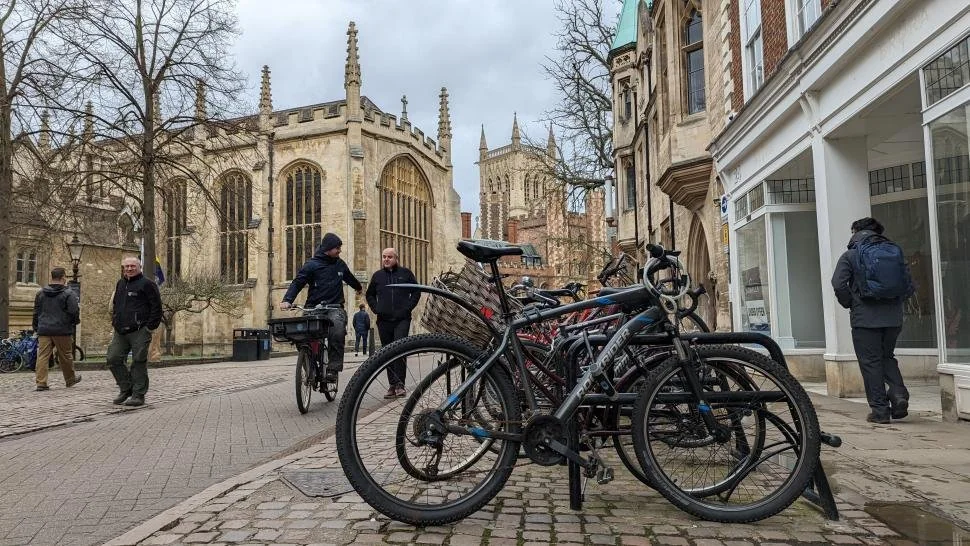Introduction: The Rapid Growth of Urban Cycling and Its Impact on Infrastructure
In recent years, urban cycling has seen a remarkable surge in popularity. Once seen primarily as a recreational activity or an alternative for the environmentally conscious, cycling is now a mainstream mode of transportation in many cities around the world. This shift has been driven by a variety of factors, including increased awareness of environmental issues, rising concerns about traffic congestion and air pollution, and the growing popularity of health-conscious lifestyles. As cities strive to become more sustainable, cycling has emerged as a key element in the future of urban mobility.
The rapid growth of urban cycling is not just changing the way people get around—it’s also reshaping the urban landscape itself. In order to accommodate the growing number of cyclists, cities are increasingly investing in cycling infrastructure, from dedicated bike lanes to bike racks and green spaces. In this article, we will explore how these trends are influencing the future of bike infrastructure and how cities are adapting to meet the needs of an expanding cycling population. We will also examine the environmental impact of urban cycling and the role of urban planning in shaping a more sustainable future.
Infrastructure Developments: The Shift Toward Bike Lanes, Bike Racks, and Green Spaces
As more and more people turn to bicycles for their daily commute or leisurely rides, cities around the world are being forced to rethink their infrastructure. The need for safe, accessible spaces for cyclists has become a priority in urban planning, leading to the development of dedicated bike lanes, bike racks, and other bike-friendly facilities.
Bike Lanes: Creating Safe and Efficient Cycling Routes
One of the most important developments in urban cycling infrastructure is the creation of dedicated bike lanes. As cycling becomes more popular, cities are realizing that sharing the road with cars can be dangerous for cyclists, especially in high-traffic areas. To address this, many cities have begun to design bike lanes that are physically separated from vehicle lanes, providing cyclists with a safe and efficient route for commuting.
Bike lanes not only improve safety but also encourage more people to take up cycling. When people feel confident that they can ride safely without the constant risk of being hit by a car, they are more likely to choose cycling over other forms of transportation. In fact, research has shown that the presence of bike lanes is one of the most important factors in encouraging people to cycle. As cities continue to expand their bike lane networks, the goal is to create a cohesive network that connects key urban areas, making cycling a convenient and practical option for more people.
Bike Racks: Making Cycling More Convenient
In addition to dedicated bike lanes, the availability of bike racks and bike storage facilities is another important element in the development of urban cycling infrastructure. As more people cycle for commuting and daily errands, the demand for secure and convenient places to park bikes has grown. Cities are responding by installing bike racks in public spaces, such as near transit stations, shopping centers, and office buildings.
In some cities, the demand for bike storage has led to the development of more advanced solutions, such as bike lockers and bike-sharing stations. These facilities not only make cycling more convenient but also encourage people to use bikes as part of a multi-modal transportation system, combining cycling with public transportation. By providing cyclists with secure places to park their bikes, cities can make cycling a more viable option for people who may not have access to secure storage at home or work.
Green Spaces: Integrating Cycling with Urban Parks and Recreation Areas
Another important aspect of urban cycling infrastructure is the integration of bike paths with green spaces and urban parks. Many cities are now focusing on creating networks of cycling routes that connect residential areas with parks, recreational areas, and other green spaces. This not only encourages more people to cycle for leisure and exercise but also helps to improve the quality of urban life by providing residents with access to nature and outdoor activities.
By integrating cycling paths with green spaces, cities can create more sustainable and livable urban environments. Green spaces provide cyclists with a safe, peaceful environment to ride, away from the noise and pollution of busy streets. They also offer an opportunity to connect with nature, which has been shown to have positive effects on mental health and well-being.
Environmental Impact: How Cities Are Supporting Cycling as an Eco-Friendly Transport Option
The environmental benefits of cycling have been a key driver behind the growth of urban cycling. As cities face the challenges of air pollution, traffic congestion, and climate change, cycling is increasingly being seen as a sustainable solution to many of these problems. By promoting cycling as a form of transportation, cities can reduce their carbon footprint, improve air quality, and create more sustainable urban environments.
Reducing Carbon Emissions
One of the most significant environmental benefits of cycling is its potential to reduce carbon emissions. Unlike cars and public transport, bicycles produce zero emissions, making them a clean and eco-friendly alternative to traditional forms of transport. As more people choose to cycle instead of driving, cities can significantly reduce their overall carbon emissions and contribute to efforts to mitigate climate change.
In addition to the direct emissions reductions from cycling, the promotion of cycling can also lead to broader changes in transportation patterns. For example, as more people cycle, there may be a reduction in the demand for short car trips, which are often the most polluting. This can lead to a shift toward more sustainable modes of transportation overall.

Improving Air Quality
Cycling can also help improve air quality in urban areas. Traffic congestion and car emissions are major contributors to air pollution in cities, particularly in densely populated urban centers. By encouraging cycling as an alternative to driving, cities can reduce the number of vehicles on the road, which in turn can help reduce air pollution and improve the overall quality of the urban environment.
In some cities, the promotion of cycling is being paired with efforts to reduce vehicle emissions, such as low-emission zones or restrictions on car access in certain areas. By combining cycling infrastructure with other sustainable transport initiatives, cities can create cleaner, healthier environments for their residents.
Reducing Traffic Congestion
Another important environmental benefit of cycling is its ability to reduce traffic congestion. As cities grow and populations increase, traffic congestion has become a major issue in many urban areas. Cycling offers a way to reduce the number of cars on the road, making it easier for everyone to get around, whether they are cycling, walking, or driving.
By providing dedicated bike lanes and bike-friendly infrastructure, cities can encourage more people to cycle instead of driving, helping to ease congestion and reduce the strain on urban transportation systems. This can lead to shorter commute times, reduced fuel consumption, and a more efficient transportation network overall.
Future Projections: What Urban Planning Experts Predict for the Next Decade
Looking ahead, urban planning experts predict that cycling will continue to play an increasingly important role in the future of urban mobility. As more cities embrace cycling as a sustainable transportation option, we can expect to see even more investment in cycling infrastructure and a greater emphasis on creating bike-friendly urban environments.
Expansion of Cycling Networks
Over the next decade, urban planners expect to see significant expansion of cycling networks in cities around the world. This will involve not only the creation of more dedicated bike lanes but also the integration of cycling with other forms of transportation, such as public transit and shared mobility options. Cities will work to create seamless connections between bike lanes, public transport hubs, and key urban destinations, making cycling a more convenient and viable option for more people.
In addition to expanding the physical infrastructure, urban planners also predict that technology will play an increasingly important role in cycling infrastructure. For example, cities may implement smart bike racks that can track bike usage, provide real-time availability information, or even offer charging stations for electric bikes. These innovations will help make cycling more convenient, efficient, and accessible for urban residents.
Green Urban Planning
As cities continue to prioritize sustainability, we can also expect to see a greater emphasis on green urban planning. In the coming decade, urban areas are likely to integrate more green spaces into their cycling infrastructure, creating networks of parks, bike paths, and green corridors that connect different parts of the city. This will not only enhance the cycling experience but also improve the quality of life for city residents by providing more access to nature and outdoor spaces.
Conclusion: Is the Future of Cities Truly Cycling-Friendly?
As urban cycling continues to grow in popularity, cities around the world are adapting to meet the needs of cyclists. Through the development of dedicated bike lanes, bike racks, and green spaces, cities are creating the infrastructure necessary to support a more sustainable and bike-friendly future. At the same time, the environmental benefits of cycling—such as reduced carbon emissions, improved air quality, and reduced traffic congestion—make it a crucial component of the sustainable urban mobility agenda.
Looking ahead, urban planning experts predict that cycling will continue to play an important role in shaping the future of cities. As cities invest in cycling infrastructure and embrace the potential of cycling as a sustainable transportation option, we are likely to see a significant transformation in urban mobility. Whether through the expansion of cycling networks, the integration of smart technologies, or the creation of greener urban environments, the future of cities is increasingly looking more cycling-friendly.
In this context, it is clear that the rise of urban cycling trends is not just a passing phase but a key part of the sustainable urban future. With continued investment and innovation, cities can become more livable, sustainable, and bike-friendly in the decades to come.



































Discussion about this post